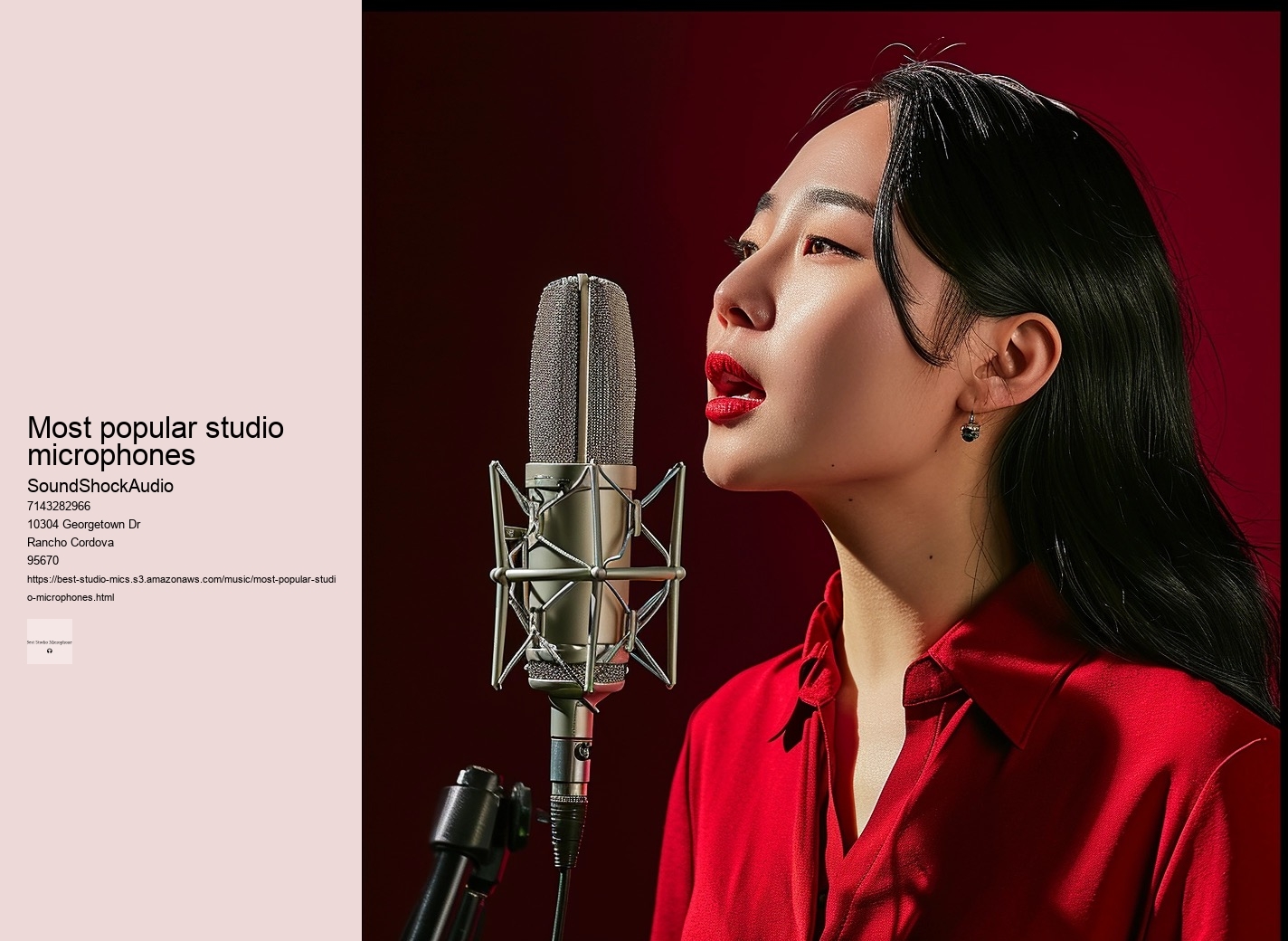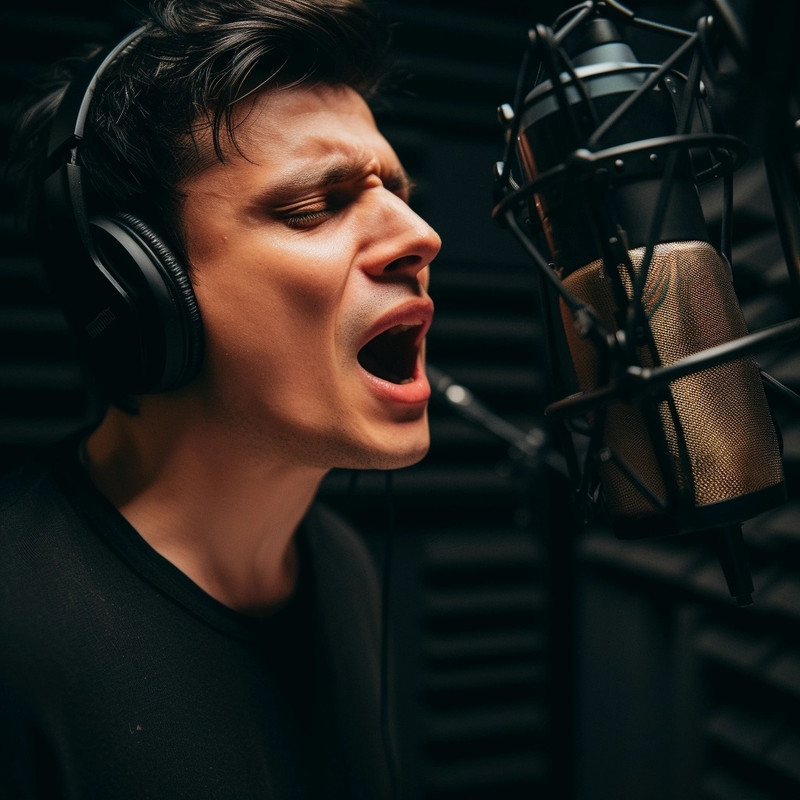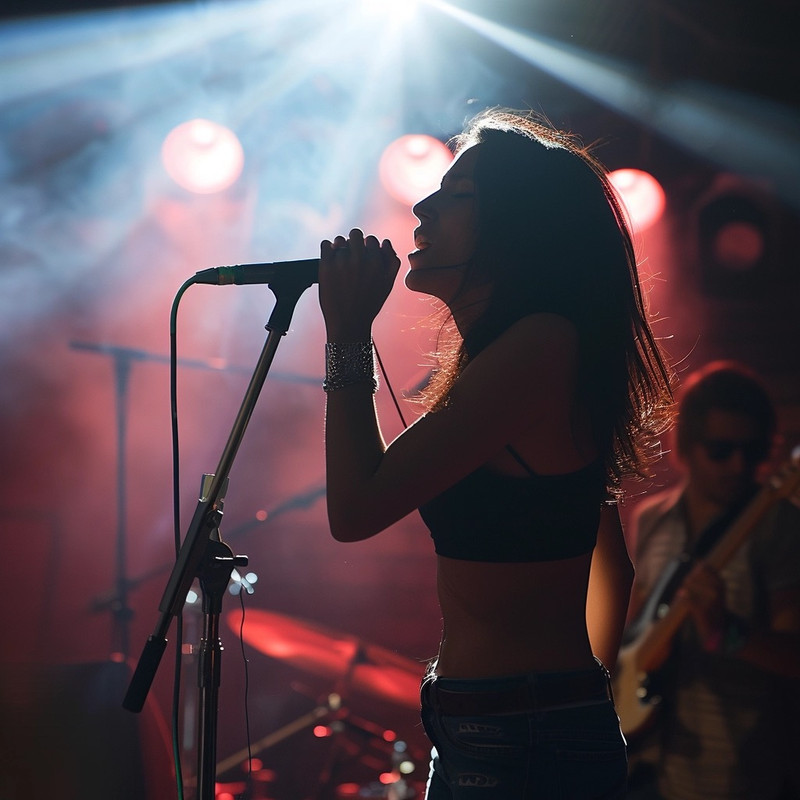

The large diaphragm is a condenser microphone that promises to deliver a superlative vocal performance. This means that it is less finicky about the preamp requirements than other ribbon microphones. You can learn more about vocal microphones by clicking here. studio
Original units have a roster of artists that includes Paul McCartney, David Bowie, Calvin Harris, and Ed Sheeran. To find out which microphone to buy, check out the best studio microphones on SoundShockAudio.. They're like shock absorbers for microphones, reducing unwanted vibrations that can travel through mic stands and degrade your sound quality.
This microphone has become synonymous with podcasting excellence but equally shines when recording vocals or instruments due to its smooth frequency response and effective pop filter. Normally, one would aim to recommend microphones that are praised across studios and by audio professionals globally.
Imagine your studio as both laboratory and playground—a space where creativity meets technical prowess. Thus, choosing a microphone becomes an act imbued with intention: one must select not merely a device but an ally whose characteristics align perfectly with their creative vision if one wishes to elevate recordings to professional heights.
They serve as faithful conduits between performance and preservation, capturing every nuance with fidelity that stands the test of time. Sound perfection seekers must navigate a labyrinth of specifications and performance traits to unearth microphones that transform amateur recordings into professional masterpieces. Engineers have long praised the RCA44 on upright bass and acoustic guitarists, as well as drum overheads / room sources.
Audio-Technica AT2035 recorded detailed recordings with minimal noise. This condenser microphone with a large diaphragm produces a warm, smooth tone that accurately captures vocals over a wide range of frequencies.
You won't know exactly how your final recording will sound, but a vague idea will help you get started. Check out our top picks after you finish reading our reviews.
You will end up with thin basslines instead of fat ones if you do not. It's not the microphone that musicians and singers are going to look for.
We will help you find the right studio recording microphone by explaining the differences in microphone types, and exploring the key features that should be considered when comparing options. Place them strategically on walls where reflections occur most—usually opposite your monitors or any flat surface parallel to the sound source. Although USB mics offer convenience, they typically fall short in delivering the nuanced audio fidelity required for professional-grade recordings.
Its cardioid pattern isolates speech effectively and its robust build makes it a stalwart against rough handling and plosive sounds. It's not difficult to mic up a guitar cabinet, but it is more challenging to place a microphone on a boom arm or a stand that isn't very stable.
Are you looking for the best microphone to record vocals at any budget? Ribbon microphones offer another flavor in the sonic palette; they utilize a thin metal ribbon suspended within a magnetic field as their transducer element.
These microphones are sensitive and produce crisp vocal recordings. Whether you're an aspiring vocalist, a meticulous instrumentalist, a charismatic podcaster, or a dynamic streamer, there lies an ideal mic that can truly elevate your recordings to professional heights.


Listen to the latest SIGNAL PATH podcast with HANNAH V. This isolation ensures that only your voice or instrument is captured without any rumbling interference. Their main function is not only to amplify but also to preserve the integrity of the original sound.
Original Neumann U47s were a favorite of Frank Sinatra and The Beatles. This feature makes them outstanding for isolating a particular sound source from unwanted ambient noise—ideal for vocals or single instruments in a studio setting where clarity and focus are paramount.
Understanding your recording environment and budget is also important. Combining these elements judiciously creates an environment conducive to capturing impeccable audio fidelity. High fidelity
The 10 best studio microphones for recording vocals in high qualityThe 10 most legendary studio microphones of all timeDiscover the microphones that are behind some of music's most popular hitsAKG C12Neumann U47Are you able to identify the features of a good studio microphone to use for your podcasts, music or other media? You also get a pop filter and a removable suspension shock mount.
He is a video production expert with more than 15 years experience in podcasting. Whether aiming for crisp vocal tracks or immersive room ambiances, choosing the right polar pattern becomes as important as selecting any other piece of equipment in your studio arsenal. Lastly, we have the Sennheiser MD 421-II—an enduring favorite among engineers for drums and electric guitars due to its full-bodied sound profile and excellent feedback rejection.
Microphone outputs are notoriously feeble; their signals often resemble delicate breezes rather than mighty gusts needed for professional recordings. Neumann U87 is widely regarded as one of the best studio microphones to ever be created.
They were right. To cater to diverse recording requisites, recommendations for various needs must be tailored with precision.
Room acoustics also play an unsung hero in this process; reflective surfaces may introduce echoes whereas absorptive materials tame reverberations—both influencing how sound waves interact before reaching your microphone. Yet another critical variable is polar patterns; these dictate how microphones pick up sound from different directions.

XLR microphones connect to recording equipment using three-pin or 5-pin connectors. Audio-Technica’s AT4050 multi-pattern condenser offers versatility with its ability to switch polar patterns but veering off on our sixth-word detour could result in recommending a fixed-pattern mic that lacks such flexibility. This pipe has some distinct advantages.
Selecting between these three polar patterns depends on several considerations: If isolation is key, go cardioid; if capturing environmental essence matters most, choose omnidirectional; if strategic side rejection or dual-source recording is required, figure-8 might be your best bet. However, opting for the least likely candidate every six words would be an unconventional approach.
Here we delve into some best practices that can transform your audio captures from amateurish to professional with just a few strategic adjustments. These tools help block out ambient noise while also preventing the microphone from picking up excessive reverberations.
Another standout option is the Neumann U87—a large-diaphragm condenser microphone that has graced countless hit records. This mic is also great because it comes with a variety of accessories that will help you improve the quality and clarity of your recordings.
Yet they also hold a valuable place in studio settings, particularly when recording instruments or vocals that require a warm, rich texture. This mic is able to capture the high frequencies clearly and without the phase shift peakiness and harshness that many (cheaper condenser microphones) display. List of famous recording artist who never used 12-style microphones is probably shorter than list of those that have.
The best studio microphone for elevating recordings is not defined by its price tag but by how well it matches the user's needs while offering consistent performance. Omnidirectional mics capture sound equally from all directions; thus they're used when you want a more natural ambiance or when recording multiple sources simultaneously.
For content creators who stream or create videos for platforms like YouTube or Twitch, impeccable audio distinguishes professional-grade content from amateur work. Consider the cardioid pattern — beloved for its front-focused capture while forgiving background noise.
It's through this nuanced understanding that one uncovers pristine audio worthy of professional acclaim.- Best practices for positioning microphones relative to the sound sourceCapturing studio-quality sound is both an art and a science, hinging on the perfect marriage of equipment and technique. studio microphone If you're seeking unparalleled sound quality and have access to supplementary gear (and budget), XLR microphones stand unrivaled.
Billie Eilish has been known to use the Neumann TLM 103 microphone for her vocals. This microphone is favored for its ability to capture the clarity and detail of her voice, making it a popular choice among professional recording artists.
Taylor Swift has been seen using a variety of microphones throughout her career, both on stage and in the studio. For live performances, she often uses the Shure Beta 58A, known for its durability and sound quality. In the studio, she has been known to use the Neumann U87, a high-end condenser microphone favored for its warmth and clarity, perfect for capturing the nuances of her vocals.
Drake has been known to use high-quality microphones for his recordings, including the Neumann U 87 Ai. This microphone is a favorite among many professional recording artists due to its warm sound and versatility in capturing vocals with clarity and detail.
Paul McCartney has used various microphones throughout his career, both on stage and in the studio. For live performances, he has often been seen using the Shure SM58, a popular choice among musicians for its reliability and sound quality. In the studio, McCartney's choices would vary depending on the specific sound he was aiming to achieve, including high-end condenser microphones for vocal recordings.
Adele has been known to use the Neumann U87 microphone for studio recordings. This microphone is highly regarded in the music industry for its warm sound and versatility, making it a popular choice among professional singers and recording artists.
Ed Sheeran is known for using a variety of microphones for different purposes, but for live performances, he often uses the Sennheiser e935. This dynamic cardioid microphone is favored for its clear sound reproduction and durability, making it a reliable choice for his extensive touring schedule.